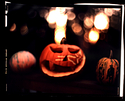Well, that was an interesting test with using Photoflo 1+200.
First of all I tried to calculate number of drops per ml. I drew up 2.5 ml Photoflo into a syringe and tried to dispense it drop by drop into a spoon. I lost count around the 60 drop mark. The drop size may also not be the same as my normal usage; i.e. dip my thermometer into neat Photoflo and allow a few drops to fall into tank with final wash water.
I then mixed up a beaker of Photoflo 1+200 and allowed it to stand for about 20 mins before I started development. There were a few bubbles which had disappeared before I came to use it.
After the final wash I drained the tank and gently poured the Photoflo solution. I got a load of foaming in the tank which gave me reservations at first about removing the film reel through the bubbles.
View attachment 295520
I followed my normal hanging procedure which is to attach film to clips and give the film 4 or 5 whips to shake off surface drops.
Normally at this stage I would see sheeting of water across the emulsion side and just pin head sized drops on the non emulsion side. In this case the water was sheeting fully across both sides of the film. The Photoflo was doing its job fully. I also noticed a large number of tiny oblects in the sheeted water which I now realise were little air bubbles, smaller than pin head size.
The film dried perfectly without any water marks or chalk deposits of any kind. It's as good as I have ever seen. There may be dust particles but I haven't scanned it yet but as I said previously, dust is like death and taxes.
Will I change my usage of Photoflo? I don't know. The only downsides for me are the extra prep work in preparing yet another solution in addition to dev / stop / fix and my Photoflo consumption will rocket from less than 3 bottles in 40 years to maybe one bottle every 2 years or so

.






 .
. There have been some who say no problem and some who just do wetting out of reel. Is there real science in this? For example when developing 5 rolls at a time, it is extra hassle.
There have been some who say no problem and some who just do wetting out of reel. Is there real science in this? For example when developing 5 rolls at a time, it is extra hassle.
